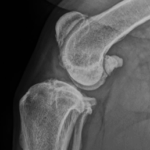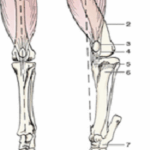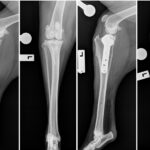
Periodontal Disease in a dog
Dental disease is one of the most common conditions we diagnose in older pets. We find that small breed dogs are especially prone to dental disease, although it can affect pets of any size and age. Some studies have shown that up to 80% of dogs over the age of three have some degree of dental disease.
What is dental disease?
Unlike people, dogs and cats rarely get cavities. We are much more likely to see a condition called periodontal disease, which infection and inflammation of the structures supporting the tooth within the mouth. This includes the gums, ligaments and bones in the region, so we often see infection destroying the gums and bone in an affected pet.
What problems does dental disease cause pets?
Dental disease affects the pets in two main ways – locally and systemically.
Local effects:
- periodontal disease is painful. Anyone who has had a tooth root infection will know how painful it can be. Dogs and cats are very good at hiding pain, so will normally continue to eat and otherwise behave normally, despite constant pain.
- Periodontal disease destroys bone and soft tissue. With severe cases, we can see infection in the bone, as well as the bone being eroded by infection. This can lead to a hole between the mouth and the nasal passages, which creates problems with food and fluid going into the airways, as well as chronic pain.
Systemic effects:
- Bacteria and their toxins enter the bloodstream. It has been shown that pets with dental disease have damage to their heart, liver and kidneys. This can lead to them feeling constantly unwell, and can even be fatal.
- Chronic pain effects. When an animal has constant pain, it will have a wide range of effects including a poorer immune system, increased cancer risks, and many other problems.
How do we treat dental disease?
One of the biggest concerns that people have when it comes to treating their pets is anaesthetic safety. There has been an increase in untrained people offering “anaesthesia free” dentals in recent times, but we strongly recommend against these. Without anaesthesia, it is impossible to properly assess what is happening beneath the gum line, and it’s very stressful and painful for the pet. Cleaning below the gum line is the most important part of any dental cleaning, and it can’t be done properly with a cat or dog which is awake.
As mentioned above, pets don’t tend to get cavities. This means that the plaque and calculus above the gum causes bad breath and looks bad, but it doesn’t contribute to clinical disease. It’s the stuff at and below the gum line which causes the disease in pets. So if we just clean the tooth above the gumline we get prettier teeth, but no improvement for the pet. This means pets can continue to have painful teeth not being diagnosed or treated, and periodontal disease can continue to get worse because there’s no cleaning or treatment below the gumline.
Anaesthesia in pets has improved a lot over the last 10-20 years and is very safe. We tailor our anaesthetic protocols to each individual pet, the anaesthetic is always monitored by a fully qualified veterinary nurse, and high-quality monitoring equipment allows us to pick up can correct problems very early. We also use nerve blocks where appropriate, so anaesthetics can be kept as light as possible and the pet can wake up without pain.
Once the pet is anaesthetised, we examine and chart the teeth. We then examine each tooth individually to check for any problems and plan the treatment process. The teeth are then cleaned above AND below the gum line, and extractions and oral surgery are performed where needed. Depending on the tooth and disease present, we may create gum flaps which help us to remove the tooth and close over the sockets afterwards.
When extractions are required, we will ensure the pet has good quality pain relief for the recovery period, and antibiotics if needed. We will also perform a post-operative check 7-10 days after the procedure to ensure healing has progressed as expected.
We quite often find that owners are amazed at how much brighter and happier the pets are after the procedure. We frequently hear comments like “it’s like he’s five years younger”. This is due to a combination of the dog no longer being in pain and the bacteria not entering the bloodstream and more.
What should I do if I think my pet has dental disease?
The first step is to give us a call or make an appointment online HERE. One of our vets will assess your pet’s teeth as well as their general health to ensure the anaesthetic will be safe and appropriate. If dental treatment is needed, the vet will make an appointment for you to bring your pet in for the dental treatment, and provide you with an estimate for the procedure. This will also give you a chance to discuss any specific concerns you may have.
We will normally book the procedure for a day where you can be contacted by phone so we can discuss treatment with you if extractions are required as we can’t be sure how many extractions are required until we have thoroughly examined each tooth under anaesthetic.



